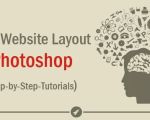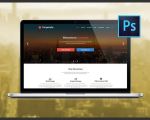- 1-Understanding-the-Basics-of-Website-Design-Description
- 2-Key-Elements-to-Highlight-When-Describing-Website-Design
- 3-Effective-Language-and-Terminology-for-Website-Description
- 4-Real-World-Examples-of-Describing-Website-Design
- 5-Tips-for-Writing-Clear-and-Engaging-Website-Design-Descriptions
- 6-How-SitePoint-24-Can-Support-Your-Website-Description-Needs
1. Understanding the Basics of Website Design Description
Describing a website design effectively means conveying the visual style, usability, and functionality in a way that is clear and informative. Whether you’re communicating with clients, writing content, or presenting a portfolio, understanding how to describe a website design helps ensure your message resonates.
It involves more than just stating facts; it requires highlighting the experience the design offers, the emotions it evokes, and how it meets user needs.
2. Key Elements to Highlight When Describing Website Design
When explaining a website design, focus on several critical aspects:
2.1 Visual Aesthetics
Discuss the color scheme, typography, imagery, and overall style. Is it modern, minimalist, vibrant, or professional? These details help paint a picture of the site’s look and feel.
2.2 Layout and Structure
Describe how information is organized—whether the design uses grids, cards, or single-page scrolling. Mention navigation menus and how intuitive they are for users.
2.3 Functionality and Features
Highlight interactive elements such as forms, animations, e-commerce capabilities, or multimedia integration that enhance user engagement.
2.4 User Experience (UX)
Explain how the design facilitates ease of use, accessibility, responsiveness across devices, and fast loading times.
3. Effective Language and Terminology for Website Description
Using precise and engaging language elevates your description. Words like “clean,” “responsive,” “intuitive,” “dynamic,” and “user-friendly” clearly communicate design qualities.
Balance technical terms with accessible explanations to ensure your description appeals to both designers and non-experts.
4. Real-World Examples of Describing Website Design
Consider a client project described as: “A sleek, minimalist website with a monochrome palette, featuring a grid-based layout that emphasizes product imagery. The responsive design ensures seamless browsing on both mobile and desktop, complemented by subtle animations to guide user attention.”
This example clearly conveys aesthetics, structure, and user experience, providing a vivid snapshot of the design.
5. Tips for Writing Clear and Engaging Website Design Descriptions
To enhance your descriptions, keep these tips in mind:
5.1 Know Your Audience
Tailor your language based on whether you’re addressing clients, developers, or marketers.
5.2 Use Visual Analogies
Comparisons like “the site flows like a magazine layout” help readers visualize the design.
5.3 Be Concise but Detailed
Include enough detail to inform without overwhelming the reader.
5.4 Highlight Benefits
Explain how design choices improve user engagement or business goals.
6. How SitePoint 24 Can Support Your Website Description Needs
SitePoint 24 offers resources and expert guidance to help you master the art of describing website design. Whether you need templates, professional feedback, or inspiration, SitePoint 24 provides tools that simplify the process.
Utilizing these resources ensures your website design descriptions are impactful, accurate, and tailored to your objectives.








